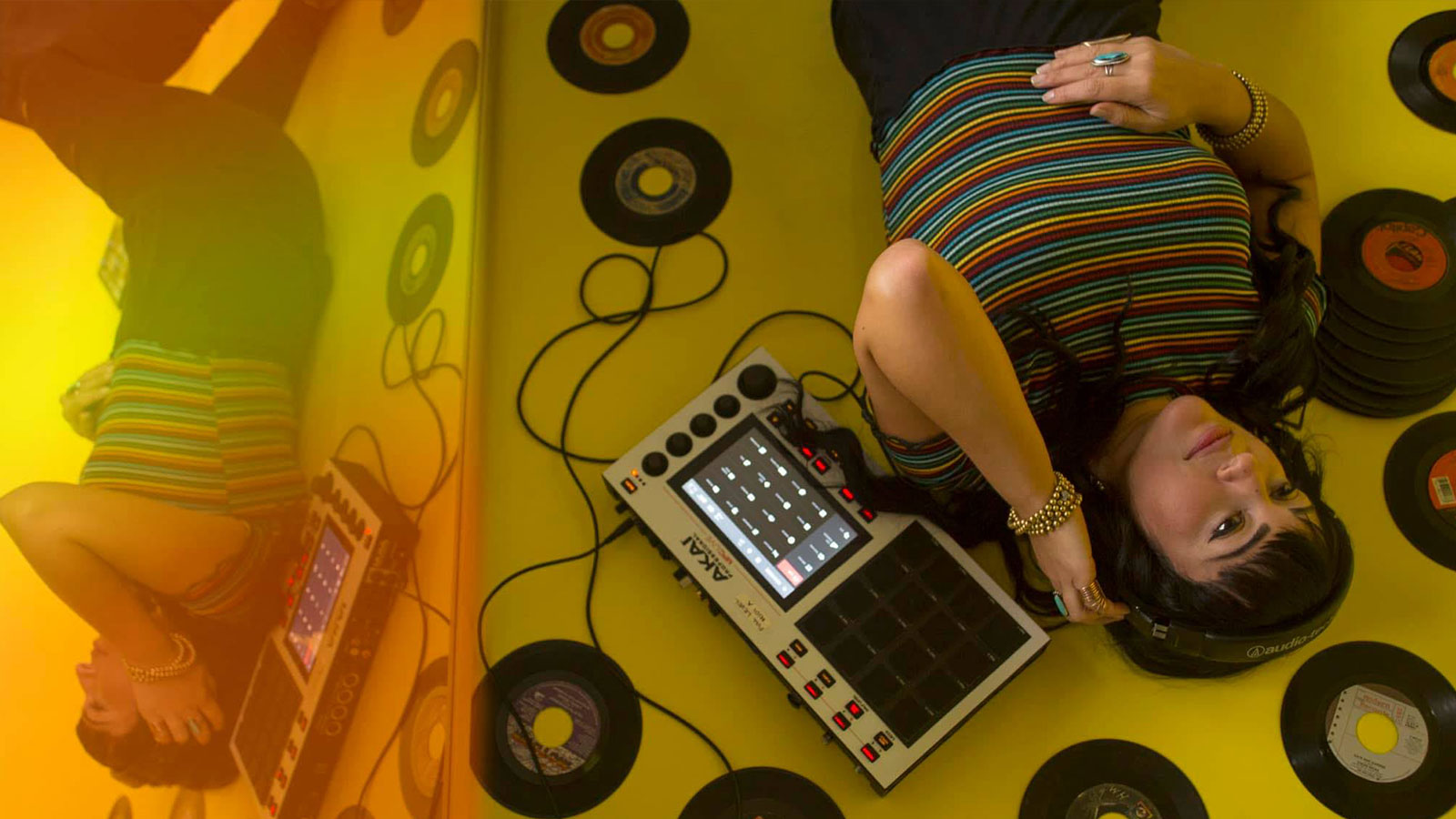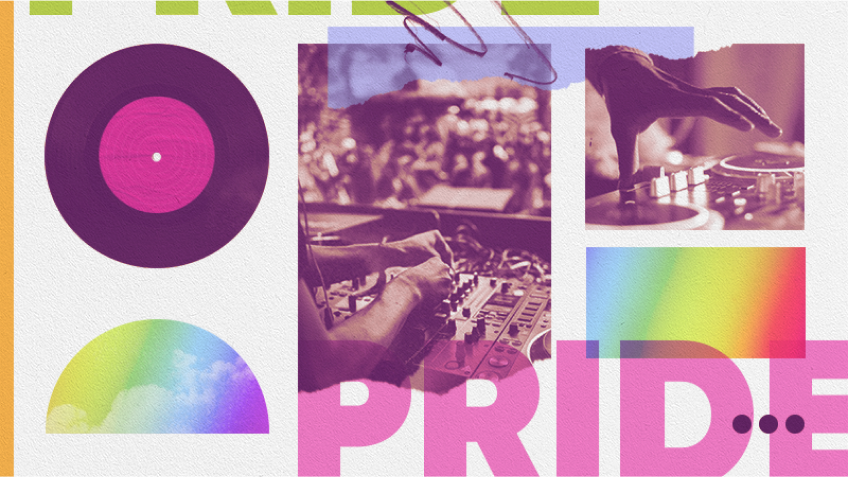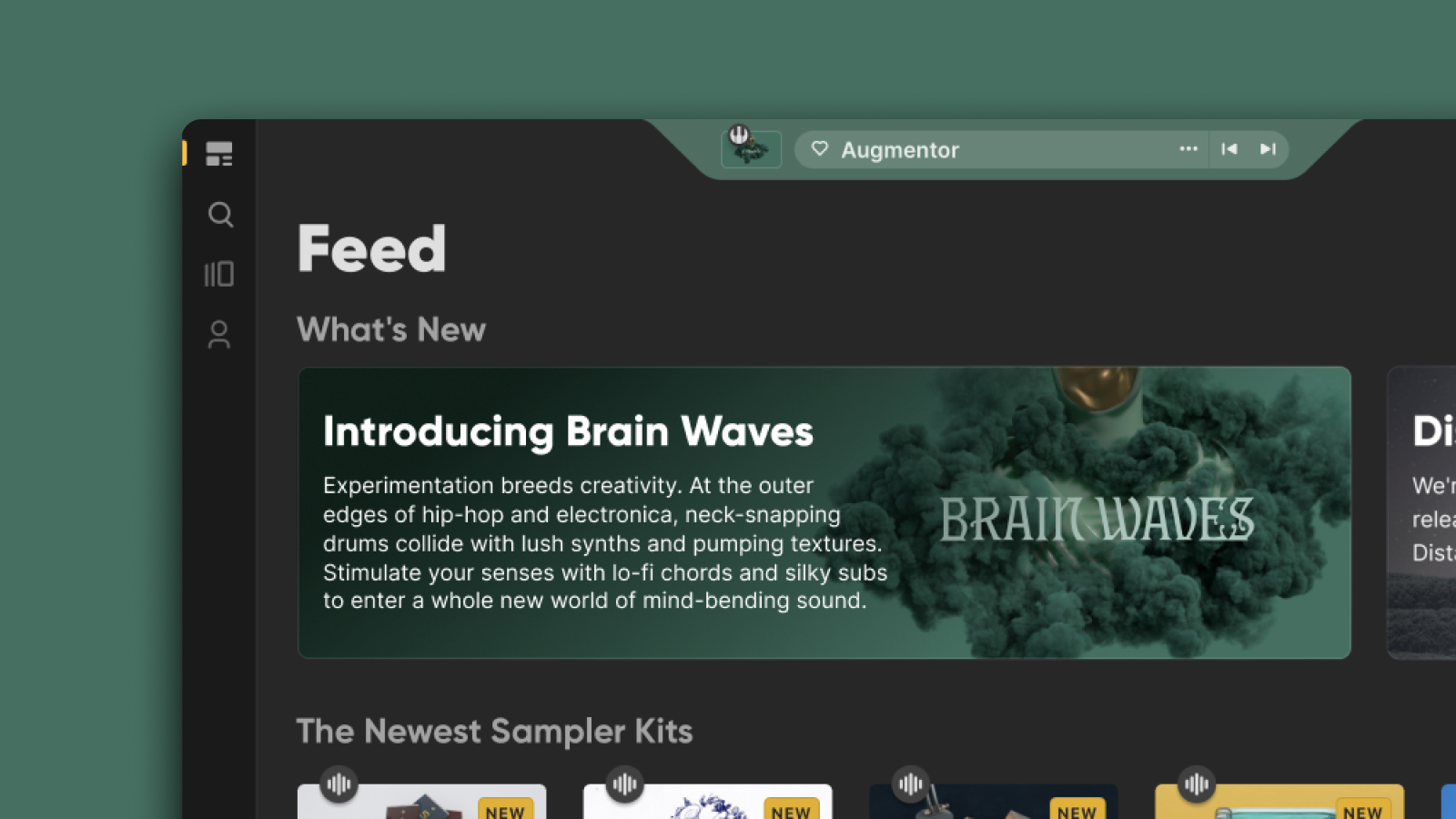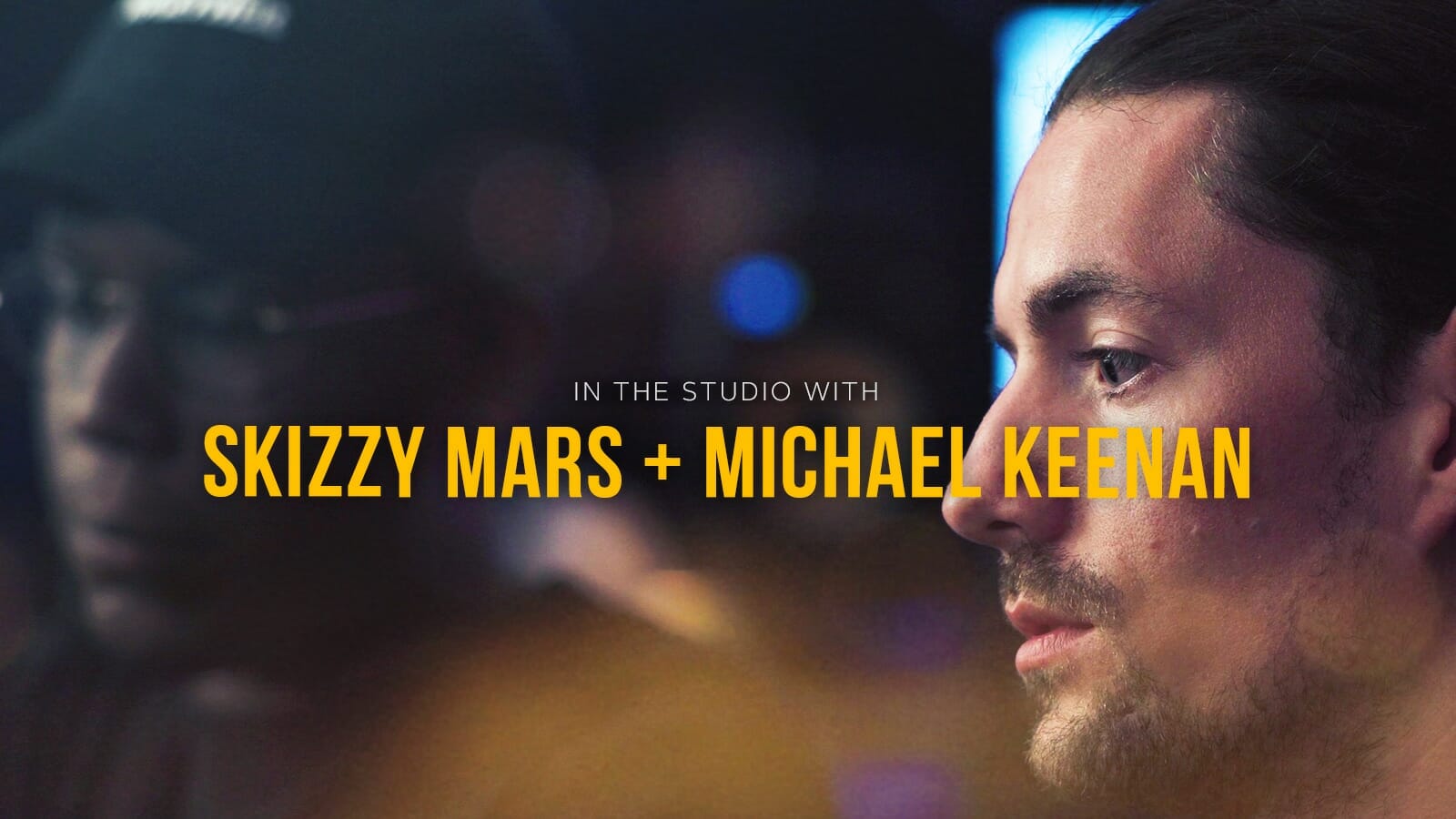Lisa Vazquez has an ear for sounds and a soul for rhythm. An award-winning beatmaker, her live performances mesmerize audiences with her virtuosic MPC performance skills, silky voice, and multi-instrumental showmanship. With her full-length debut album Nocturnal Sun set to release later this year—somewhere between a teaching stint in Argentina and a European tour—Vazquez’s sound is growing. We invited her to check out Arcade, share some creative ideas with our community, and talk about her journey as an artist and educator.
How did your background as a percussionist lead you to music production, and how does it impact your lens as a producer?
Starting out as a drummer really helped shape my foundation in music as a whole—and as a producer. Understanding melody and music theory are great tools as well, but having a strong sense of rhythm will help you in all areas. In many of my music production workshops I explain how I still think about melody in terms of rhythm. Even in ambient melodic music, there is a pulse to follow that will guide you with all of your other instrumental layers.
Can you tell us about your journey with the MPC? What inspired you to start working with it, and how has your workflow changed over the years?
Well, it was one of those things that once I got one, it all made sense. I had been using various keyboard and pad MIDI controllers and had little exposure to the MPC. The school I studied audio engineering at used DAWs and MIDI keyboards as the vehicle for recording, and when it came to analog, it was mostly instruments and rackmount effects, amps, mics, etcetera.
My boyfriend at the time was a producer who used the MPC2500, and he pushed me to get one—he could tell it was exactly what I needed. Once I got the MPC1000, I knew he was right. It was a way to utilize all the experience I had with recording various instruments and sampling, then perform them all as if I was a one woman band. It was a learning curve, but once I realized its capabilities—it was game over.
Once the newer Akai MPC Live and MPC X dropped, I spent every dollar I had to get one. The workflow is just so intuitive and perfect for me. Limiting enough, but super capable and easy use. I can record anywhere and use it with my DAW or as a standalone recording hub. 90% of the time it’s in standalone for the creation process, but when I do my final editing, I export to my DAW. With Arcade, I can use it as a controller or record parts of a beat into my DAW and finish off with Arcade. It’s very versatile.
You’re known for your live beatmaking. How do you go about creating something to perform—what does it start with, how does it take shape, and how do you know it is ready to play out?
The process of me getting to this place of ease with it has been a long one. Many years of playing instruments, performing, schooling, and trial and error with gear has finally landed me here—where I can confidently make a beat in 5 min if pressed. But to answer the question, I typically start with a melody—either something I play from an instrument or a vinyl sample—then once I find something that evokes some emotion in me, I start chopping and layering.
Usually I sequence two to three melodic parts in my MPC, then lay drums down, then bass, then whatever else I feel it may need. I usually keep it pretty raw. I can also layer live instrumentation or have other artists play or add vocals live.
Once it goes to final editing I can tweak and arrange to my heart’s delight. I do, however, like to keep things more simple since it can be easy to overcook a beat.
What is your process for finding and curating a palette of samples to work with? Where do you look for material and inspiration and what makes you pick one sound over another?
My favorite method is still going to record stores or trade shows and finding dusty gems. Something about putting on a record and discovering a new sound or melody is just top tier inspiration. As far as types of sounds, it’s more about emotion and rare instrumentation for me. I like old folk music from other countries, and mostly I pick from music made before the late ‘70—it has a certain aesthetic that surpasses a lot of modern recordings. There are some [modern] sound designers that create music that sounds rich and full of emotion—such as Arcade of course, Samarei, Rucker Collective, Crate League, UNKWN, Statik Lnk, MSXii Audio, and more. But to summarize, if the sound stirs something in me, it is the one.
What music tech and gear are you currently most excited about?
That’s a tough one. I have been eyeballing a number of analog synths, Moog, Prophet, Korg—both vintage and newer—as well as some nice microphones such as a Manley, Neumann or Peluso to add to my collection. Tube Mics and outboard gear are of particular interest since they lend more warmth to an otherwise dry or flat sounding signal, but you can still achieve that sound with the proper plug-ins and room treatment.
You are a respected educator in the area of music production and beatmaking. What are the top three things you try to make sure your students understand?
First, I emphasize that it’s not the tools, it’s the artist. Having motivation, inspiration, and remaining authentic in your craft will get you further than any one piece of gear can. People want to hear your unique sound that tells your individual story—so don’t be afraid to sound different than anyone else. That is really your superpower.
Next, I would say that practicing your basic rhythm is key. You don’t need to do any complex rhythms, but understanding basic time signatures and note division is essential.
Lastly, while there are always great tips and tricks to creating good music, there is no replacement for putting the time in. If you love it, it won’t feel like work. Finding other producers who inspire you, or samples you like, will help keep you motivated to learn and grow as an artist. Reaching your goals will happen if you just keep going.
Keep up with Lisa Vazquez: https://www.instagram.com/lisavazquezmusic
Check out her Flip it Friday series.



